
|
 |
Two seated figures of Ramesses II on either side, and remaining obelisk are located at the entrance to Luxor Temple, along with another bust of Ramesses II. The seated figure on the left (above right photo) is in better condition, but is behind the pedistal of the obelisk. The massive entrance wall is called "First Pylon".
The detail on the bust near the obelisk is astounding, but no further information was provided.
Also note the hieroglyphics on the seated figure to the right of the entrance, (photo to the right). |
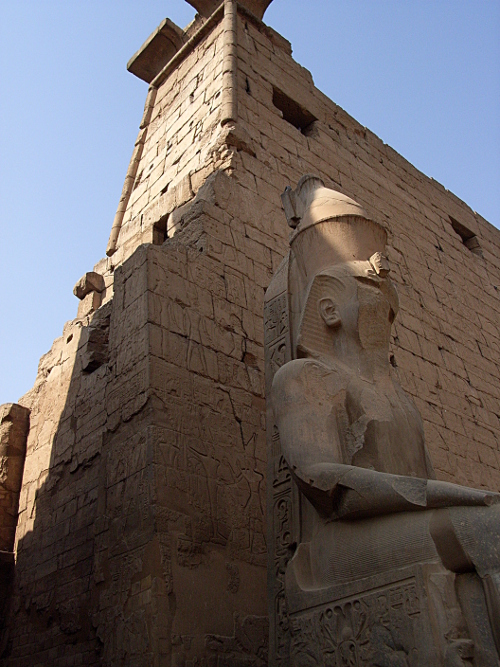 |
Hieroglyphs and figures on the outer side of seated Ramesses II on the right side of temple entrance (right). Close up of Hieroglyphs in Luxor Temple (below). The detail in the quills are just amazing. Over 3000 years old!
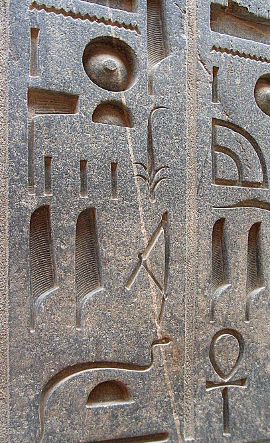
|
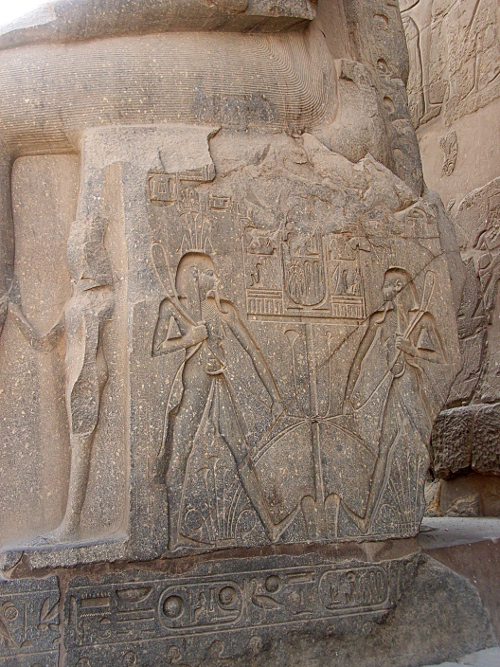 |
Photo of the remaining 75' granite obelisk in full shade at the entrance to Luxor Temple. It's mate has been in Paris, France since the mid-1830s. |
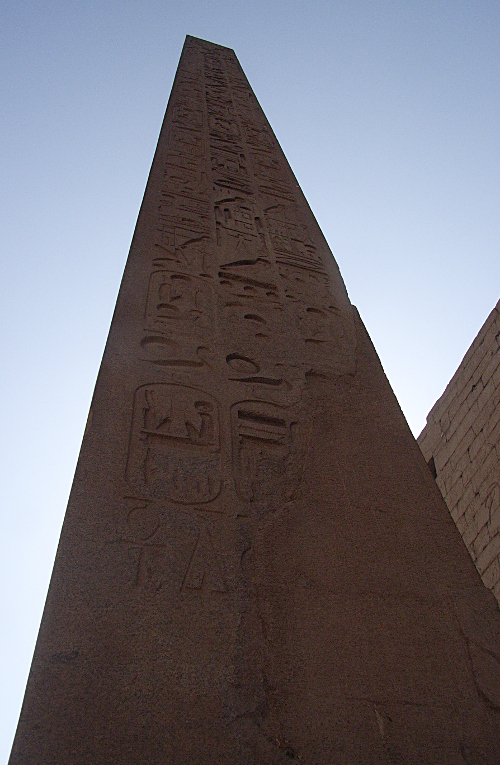 |
Luxor Temple entrance corridor. Note additional statue of a seated Pharaoh in the courtyard, center. High up on the left is the outer wall of an operating mosque, built before a 48-foot high mountain of rubble was removed during excavation, which started in 1884 and continued until 1960. Can you imagine a cleaning project taking 76 years? The fourteen papyrus topped columns in back of the statue form the processional colonnade, pictured from the side in the night photo at top of this page. |
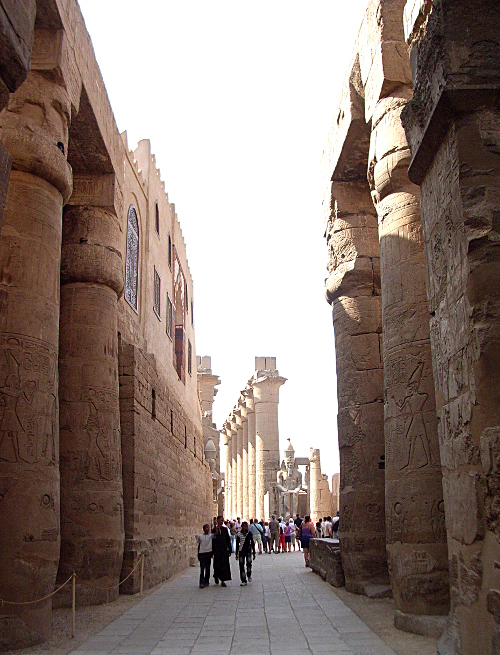 |
Court of Ramesses II looking towards First Pylon. |
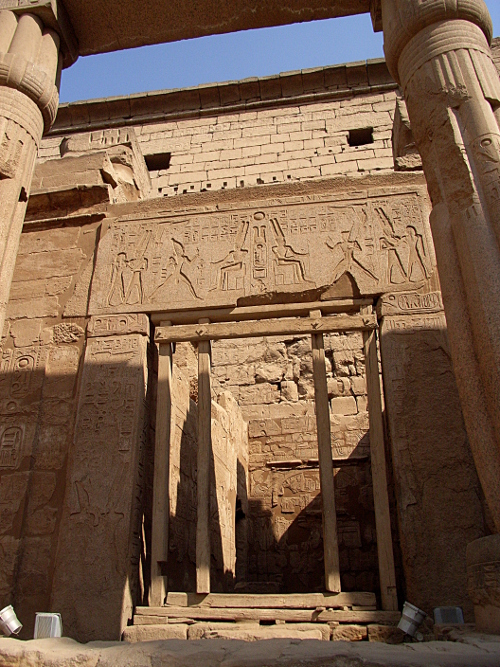 |
Seated Tutankhamun statue in the court yard of Ramesses II. The former's name has been removed and replaced with that of Ramesses II. The back side of each statue is covered in figures and hieroglyphics, as shown in the photo below. 
|
 |
Limestone statues of Tutankhamun and Queen in the Temple of Amun, Luxor Temple. |
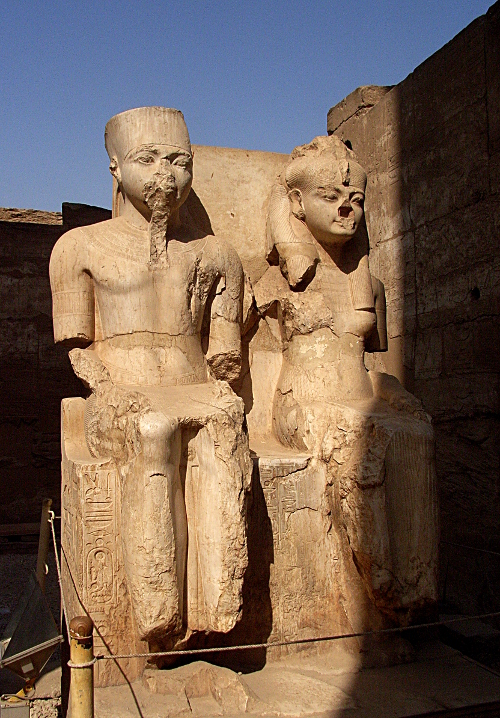 |
Row of statues between papyrus columns with bud capitals in the southern part of the Court of Ramesses II, Luxor Temple. |
 |
Row of papyrus columns, Luxor Temple. |
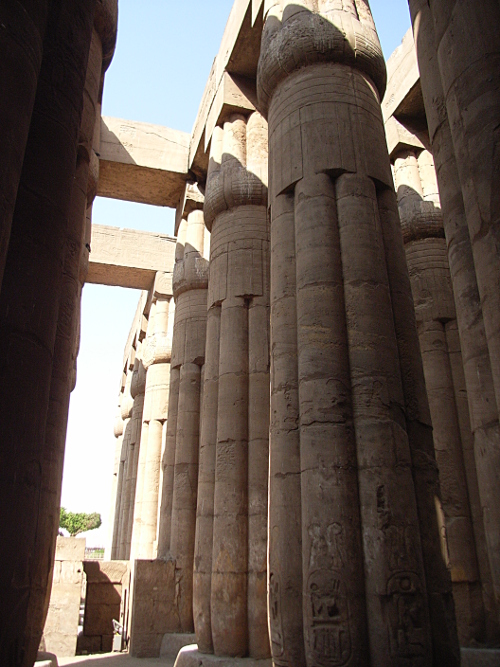 |
During the occupation, the Romans not only built their own structures, but covered the inner sanctum with stucco and painted murals of Roman scenes on the walls. |
 |
Most of the walls of sanctuaries and chapels are covered in figures and hieroglyphics as shown to the side, and in the three photos below. Note color has remained in some protected areas, as shown in the bottom photograph. |
 |
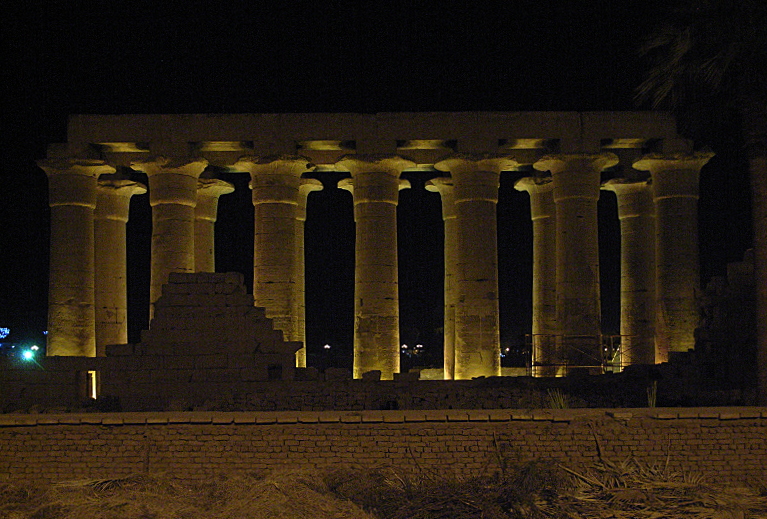
















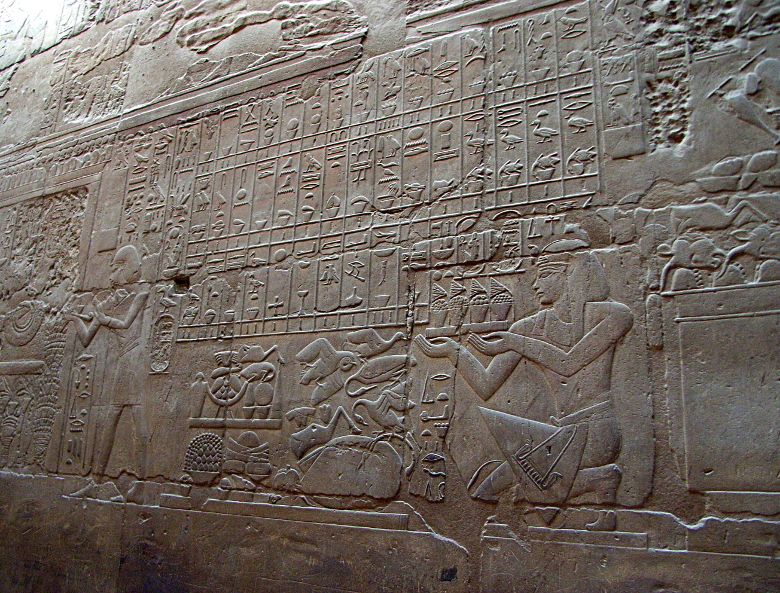

![]()